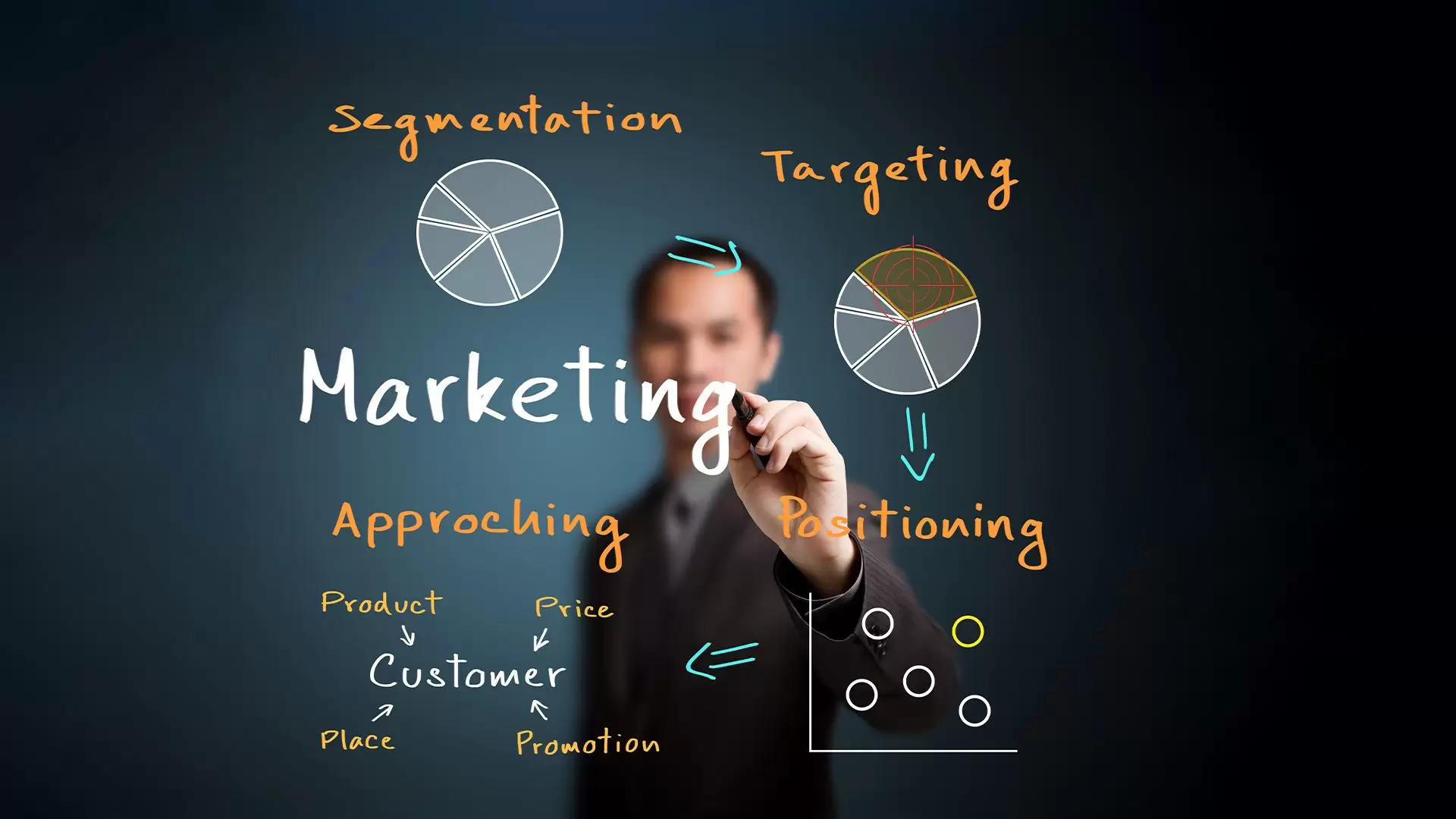Definition of Marketing
Marketing is the process of delivering the value of a product or service to customers and attracting their interest in this way. This process does not end with just advertising and sales, but also includes building a lasting relationship with customers.
What is Marketing and Its Importance
Marketing is a comprehensive strategy and set of activities designed to introduce products or services to the market, deliver them to customers, and increase sales. Marketing is not limited to advertising and sales; it is a multi-faceted process carried out to understand the desires and needs of customers, offer them the most appropriate products, build lasting relationships with customers, and create a competitive advantage in the market.
The importance of marketing is enormous because it allows companies to:
- Build and develop a brand,
- Attract and increase customer satisfaction,
- Increase revenue and expand market share.
Successful marketing strategies play a crucial role in the long-term development of the company.
Main Objectives of Marketing
The main objective of marketing is to deliver products and services to potential customers and meet their needs and desires. Key objectives include:
- Product Awareness: Introducing new products or services to a broad audience is crucial for their success.
- Understanding Customer Needs: Knowing consumers' needs and desires helps offer more suitable products and services.
- Increasing Sales: Boosting sales through marketing strategies is one of the company's primary goals.
- Brand Development: Proper marketing helps strengthen brand recognition and its position in the market.
Marketing Strategies
Marketing strategy refers to the plans and methods prepared to reach and attract customers. Each strategy has its purpose and method, but they all aim to capture the attention of customers and drive them toward purchasing.
Inbound Marketing
Inbound marketing focuses on digital marketing methods. It aims to attract customers by creating content that falls within their area of interest. Strategies like blog posts, social media posts, and SEO (search engine optimization) are part of inbound marketing. It helps customers find your brand on their own.
Outbound Marketing
Outbound marketing, on the other hand, relies more on traditional advertising methods. This includes TV commercials, billboards, email marketing, and more. Outbound marketing actively brings the brand in front of customers.
4Ps of Marketing
One of the core principles of marketing is the 4P concept, which includes the four main elements of marketing:
- Product: The product or service offered to meet customers' needs.
- Price: The price of the product or service and how it is perceived by customers.
- Place: How the product is delivered to customers and through which channels it is sold.
- Promotion: The advertising and communication strategies used to promote the product or service.
This 4P concept is the foundation of any marketing strategy and is essential for its successful implementation.
The Importance of Customer Relationships in Marketing
Customer relationships play a significant role in marketing. The long-term success of a business depends on the relationships it builds with customers. Customers should not only make a one-time purchase but also become loyal and repeat customers.
Customer Satisfaction
Offering products and services that meet customers' needs and exceed their expectations ensures customer satisfaction.
Customer Loyalty
Loyalty programs, special offers, and excellent services increase customers' loyalty to the brand. Loyal customers make repeat purchases and share positive reviews about the business.
Measuring Marketing Success
Specific metrics are used to measure the success of marketing strategies. These metrics help understand how effective a company's strategies are. The main tools for measuring marketing success include:
- Sales Volume: An increase in sales shows the effectiveness of marketing strategies.
- Customer Conversion Rate: The percentage of potential customers who become actual customers as a result of marketing campaigns.
- Advertising ROI (Return on Investment): Used to measure how much revenue is generated in return for the costs spent on marketing activities.
- Web Traffic and SEO Performance: In digital marketing, SEO performance and web traffic growth are also crucial for measuring marketing success.
Types of Marketing Strategies
Marketing strategies can be implemented in various ways, and each is aimed at different goals. In the modern business world, companies combine traditional marketing methods with digital strategies to attract more customers and strengthen their position in the market. Below, I will explain the most commonly used marketing strategies in more detail:
Neuromarketing
Neuromarketing is a type of marketing that uses neuroscience and psychology to better understand people's decision-making processes. This strategy is aimed at learning how consumers react to products and services, how their emotions and decisions are influenced. Neuromarketing tracks brainwaves, eye movements, and emotional reactions to better understand shopping habits.
For example, in a commercial or website design, using neuromarketing data on colors, music, and other visual elements can attract more attention from customers and create positive emotions towards the product. This method combines the latest scientific knowledge about consumer behavior analysis to make marketing strategies more effective.
The main advantages of neuromarketing are:
- More precise targeting: Ensures that products or services better meet customers' needs and emotional responses.
- Influencing purchase decisions: Allows for creating tailored offers by better understanding the customer’s decision-making process.
Influencer Marketing
Influencer marketing is aimed at promoting products or services through individuals with a large audience on social media platforms. Influencers share their personal experiences with products and services, which increases interest in them. This type of marketing is highly effective for social media users, as followers trust influencers and follow their recommendations.
The main types of influencer marketing are:
-
Macro-influencers: Famous individuals with over 100,000 followers. They are effective in reaching a broad audience, but their recommendations are more general.
-
Micro-influencers: Individuals with a smaller but niche audience (approximately 1,000-100,000 followers). They have a more loyal audience, and their recommendations are more personal.
-
Nano-influencers: Individuals with fewer than 1,000 followers, but their recommendations can be very effective because they have a close relationship with their followers.
Advantages of influencer marketing include:
-
More authentic content: Followers find content based on influencers' personal experiences more convincing.
-
Targeted audience: Influencers, particularly those in specific interest areas, help the product reach the right audience.
Content Marketing
Content marketing is a strategy used to attract and engage potential customers by providing valuable and useful information. This type of marketing is not just about promoting products or services but rather about creating content that solves customers' problems and adds value. The main goal of content marketing is to educate, inform, and build long-term relationships with customers.
Key forms of content marketing include:
- Blog posts: Companies share deep and informative articles about their products and services, helping to educate customers.
- Webinars and videos: Educational videos and webinars provide customers with in-depth knowledge about the company's field.
- E-books and white papers: These materials provide deeper and more comprehensive analyses aimed at solving specific problems.
- Social media content: Short, engaging posts on various platforms help connect customers with the brand.
Advantages of content marketing include:
- Stronger SEO: Useful and informative content helps improve the website's ranking in search engines.
- Customer satisfaction: Informative content helps customers gain a better understanding of the brand and earn their trust.
- Building leadership: It helps position the brand as a leader in its field.
Traditional Marketing
Traditional marketing encompasses pre-digital, conventional methods used to attract customers and promote brands. This includes advertising through television, radio, magazines, and newspapers. Although traditional marketing has been one of the most widely used strategies for a long time, it is still effectively utilized. The types of traditional marketing include:
-
Television commercials: One of the most powerful and effective tools of traditional marketing. Through this method, brands can directly access a large audience.
-
Radio commercials: Radio commercials mainly target local audiences. Although the popularity of radios has declined over the years, it remains effective for certain target groups.
-
Print advertisements: Print advertisements through magazines, newspapers, and brochures are the main methods used to deliver visual messages from brands.
-
Billboards and outdoor advertisements: Billboard ads placed on roads and in city centers allow brands to reach a mass audience.
Digital Marketing
Digital marketing encompasses marketing strategies carried out over the internet. As the most popular type of marketing today, digital marketing offers the opportunity to reach a wide audience at lower costs with more precise targeting and extensive analysis capabilities. Digital marketing consists of the following:
-
Social Media Marketing: Platforms like Facebook, Instagram, TikTok, and Twitter are perfect tools for promoting products and services. Social media marketing allows companies to directly engage with their audience and build personal relationships. These platforms also help extend the reach of advertising campaigns, with campaign results being tracked instantly.
-
SEO (Search Engine Optimization): SEO is one of the main components of digital marketing. The goal is to improve website rankings in search engines (Google, Bing, etc.) and organically reach more users.
-
Advertising Campaigns (PPC – Pay-Per-Click Ads): One of the most popular methods in digital marketing is PPC campaigns. In this model, companies pay for each click on their ads. Through this method, products and services are shown to targeted users in search engines and social media platforms. Google Ads and Facebook Ads are the most commonly used platforms for this type of advertising.
Email Marketing
Email marketing is an effective digital marketing method used to maintain direct communication with customers. Companies send special offers, discounts, and updates via email to their customer base, encouraging them to make purchases. This method is used to build ongoing relationships with more loyal customers and develop long-term customer relationships.
Through email marketing:
-
Send special offers: Companies can present offers and discounts tailored to customers' interests.
-
Product updates: Companies can inform customers about new products or services.
-
Create customer loyalty: Personalized emails and special offers strengthen customers' connection to the brand.
Advantages of email marketing include:
-
Low cost: There are no special costs associated with sending emails, making it easy to reach a wide audience.
-
Analysis and measurement: The open, click-through, and conversion rates of sent emails can be tracked, which is crucial for measuring campaign effectiveness.
Frequently Asked Questions in Marketing
What is marketing, and what is its main objective?
Marketing is the process of delivering a product or service to customers and engaging them. Its main objective is to create value for the customer, promote products or services, and increase sales.
What are the most important steps in a marketing strategy?
Learning customer needs, choosing the right target audience, and selecting effective marketing channels are crucial steps.
How can you strengthen relationships with customers?
Building strong relationships with customers requires listening to them, regularly gathering feedback, offering personalized suggestions, and providing valuable content. Customer satisfaction and loyalty are essential for long-term success.
How is the target audience determined in marketing?
Demographic (age, gender, income level) and psychographic (interests, lifestyle) data are used to determine the target audience. By analyzing customer behaviors and demands, the right target audience is selected.
What is the difference between digital marketing and traditional marketing?
Digital marketing is mainly conducted online and focuses on engaging the target audience through digital platforms, while traditional marketing uses offline channels like television, radio, and billboards. Digital marketing is more measurable and interactive.
If you want to create a professional website tailored to your business, you can benefit from our website development services. Our main goal is to create both unique designs and fast-performing websites. Make the right choice to grow your business and contact us.


.webp)




